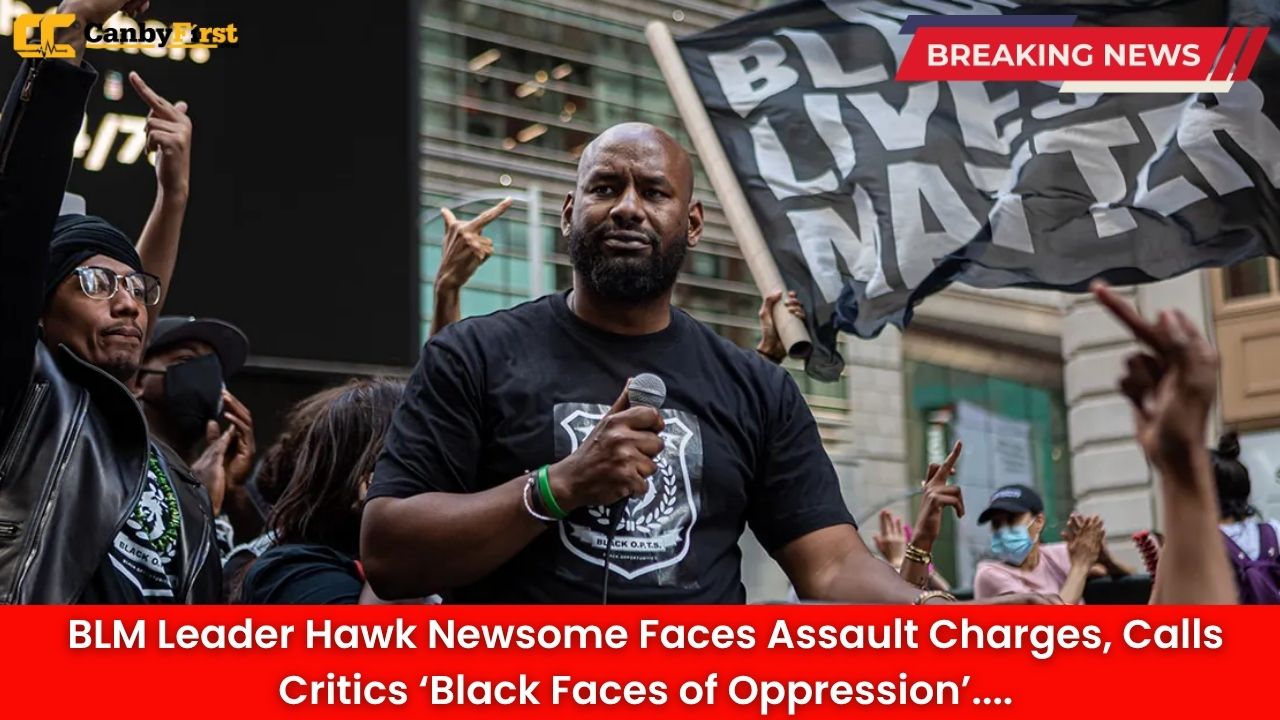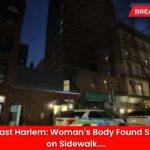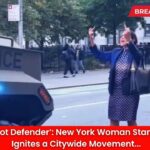New York, US:
Black Lives Matter of Greater New York co-founder Hawk Newsome, a prominent activist known for his fiery speeches and unapologetic style, is facing renewed controversy after being charged with assaulting a Black man during a confrontation in the Bronx. The altercation, which reportedly took place outside a community meeting earlier this month, has reignited debate among supporters and critics over the direction of the BLM movement and its leadership.
According to law enforcement sources, the incident occurred when an argument over local political issues turned physical. Police allege that Newsome punched another man in the face during the exchange, resulting in minor injuries. Newsome, 47, was arrested and later released pending a court date. The criminal complaint lists the charge as third-degree assault, a misdemeanor under New York law.
Also Read
Newsome Denies Wrongdoing, Blasts Political Opponents
Moments after news of the incident broke, Newsome went on social media to rail against what he described as an orchestrated campaign to smear his name and silence his activism. In a series of posts and live videos, he accused his detractors of being “the black faces of oppression,” a phrase meant to describe individuals he believes are used by political institutions to undermine the fight for racial justice.
“Black people who serve the system that kills us every day are no better than the oppressors themselves,” Newsome said during one broadcast. He vowed to fight the charges and described the confrontation as an act of self-defense. “They’re trying to take me down because I speak truth to power,” he added.
Background and Rising Tensions in the Movement
Hawk Newsome rose to prominence in the aftermath of national protests following the death of George Floyd in 2020. As co-founder of the Greater New York chapter of Black Lives Matter, he became one of the most recognizable figures in the movement’s New York wing, often delivering blunt critiques of policing, systemic racism, and political hypocrisy.
However, Newsome’s outspoken style and clashes with political leaders – including former New York City Mayor Bill de Blasio and members of city council – have repeatedly sparked controversy. Some activists within the broader BLM network have distanced themselves from his approach, describing it as too confrontational and self-promotional. Newsome has rejected such claims, maintaining that his direct approach is necessary to keep pressure on institutions that have historically failed Black Americans.
The tensions within Black Lives Matter chapters across the country are not new. Disagreements over transparency, funding, and leadership accountability have surfaced repeatedly since the movement gained national traction. Newsome’s latest legal battle adds another layer to the complex internal and external scrutiny surrounding BLM’s influence in urban communities.
Critics Weigh In
Community organizers and local officials reacted quickly to the news of Newsome’s arrest. Some critics argue that his combative rhetoric undermines the movement’s credibility. “When leaders resort to violence or inflammatory language, it distracts from the real issues facing our neighborhoods,” said one Bronx community activist.
Others defended Newsome as a passionate and misunderstood leader. “Hawk’s been doing this work for years,” said another organizer. “He’s angry because our people are still dying, still locked out, still ignored. One incident doesn’t erase his contributions.”
Political commentators also weighed in on his use of the term “black faces of oppression,” debating whether it highlights internalized racism or fosters further divisions within the movement. The phrase has gained traction online, sparking trending conversations about how racial justice organizations navigate internal dissent and their relationship with political power.
Ongoing Legal Process
Newsome’s attorney has issued a statement denying the assault allegations and insisting that his client is the target of selective prosecution. The defense claims video evidence will show that Newsome acted in self-defense after being provoked.
The Bronx District Attorney’s Office has not commented publicly on the pending case. The next hearing is expected in early November, when Newsome will formally enter a plea.
The Broader Impact on BLM’s Public Image
This latest controversy arrives as the broader BLM movement struggles to maintain unity and direction in a shifting social climate. In the years since its peak demonstrations, activists have faced challenges in sustaining momentum, securing funding transparency, and addressing crime and policing concerns within predominantly Black neighborhoods.
For many supporters, Newsome’s legal troubles and outspoken remarks reflect both the passion and pitfalls of grassroots leadership. While some view him as a symbol of uncompromising resistance, others worry the internal conflicts and misconduct allegations hurt the movement’s message.
The debate over leadership accountability, strategy, and tone continues to shape how Black Lives Matter is perceived both locally and nationally. As Newsome braces for his upcoming court battle, his words — and the reactions they stir — may once again define the delicate balance between radical activism and public credibility.
Looking Ahead
Hawk Newsome remains defiant, insisting that his fight transcends his personal situation. “They can charge me, criticize me, call me names — but they can’t kill the truth,” he declared in one recent post.
Whether his upcoming court appearance deepens the divide or renews conversation about justice and leadership in Black America remains to be seen. For now, the Bronx-born activist stands at the center of a storm, facing allegations that threaten both his freedom and his public legacy.












